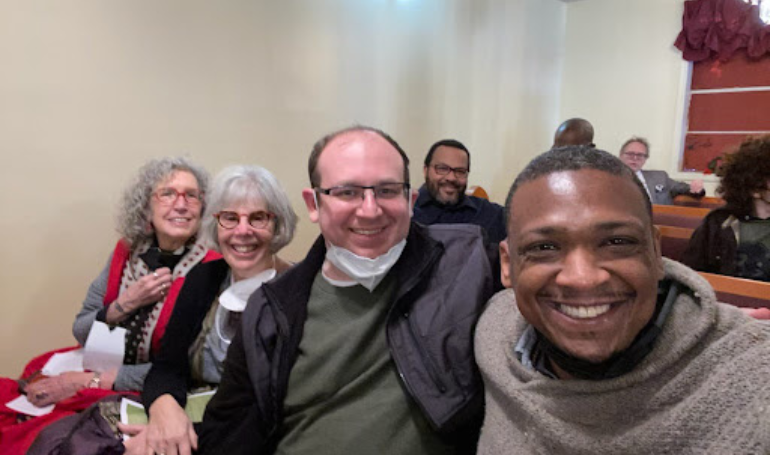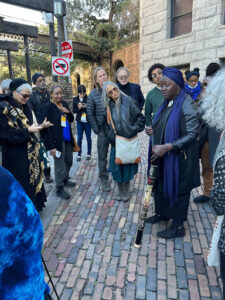
This Is A Culture of Reparations Weekend
In December, Nakhie, Lynne, and Naomi participated in a weekend-long gathering organized by the Grassroots Reparations Campaign (GRC) in Savannah, Georgia.
Many Ways to Learn
We got to engage in an intensive version of the GRC’s Building A Culture of Reparations Course,which featured leaders from across the country speaking to the history of reparations, the connections between reparations and faith/spiritual practices, the psychological case for reparations, and on-the-ground reparations projects.

The weekend was held in Savannah to highlight the efforts of Sista Patt Gunn through The Center for Jubilee, Reconciliation & Healing in renaming Calhoun Square as well as the tours she leads to shed light on the ways that slavery was conducted in Georgia.
As part of the weekend we were given a tour by Sista Patt and learned of the systems implemented to ship, trade, store, and sell enslaved people in Savannah as well as how the city government continues to this day to push back against efforts to share the full history of what occurred.
We were also shown two short films. One was a film by Jon Osaki, which highlights some of the history of reparations, particularly HR40 and the connection between Japanese internment camp victims and descendents who received reparations and current efforts toward reparations for other groups of people. The other film, Telling The Story of Slavery was by Kalim Armstrong which was about the Whitney Plantation in Louisiana, which became the first slavery museum in the nation in 2016.
The weekend also included two services. One on Friday was led by Rabbi Lynne Gottlieb and Kohenet Shoshana Bricklin. There was also an interfaith Reparations Sunday service that was held at Sista Patt Gunn’s church and featured various Christian, Jewish and Muslim leaders.
The weekend was concluded with a tour of the grounds of the former Fife Plantation, led by a descendent of the plantation owners, Eleanor Harrison. Eleanor shared with us the complex reparative process she is conducting to reconnect with the descendants of those who worked on the land during and after enslavement (some of whom attended) as well as ensuring the ancestors who are buried on the land are given proper recognition and treatment. Some of those who are buried there are on the records of General Sherman’s Special Order No.15 that initially granted land to the formerly enslaved after the Civil War along the coast of South Carolina and Georgia.
The Take-Aways
This weekend has given us more fuel to continue the work back here in Boston as we continue to think about how reparations is intertwined with the work of environmental justice, electoral justice & voting rights, and police & prison abolition that we hope to integrate more into our committee’s work in the near future.
Below you can find some of the resources that were shared and a few photos from the weekend. More will be sent via the AFREJ listserv:
